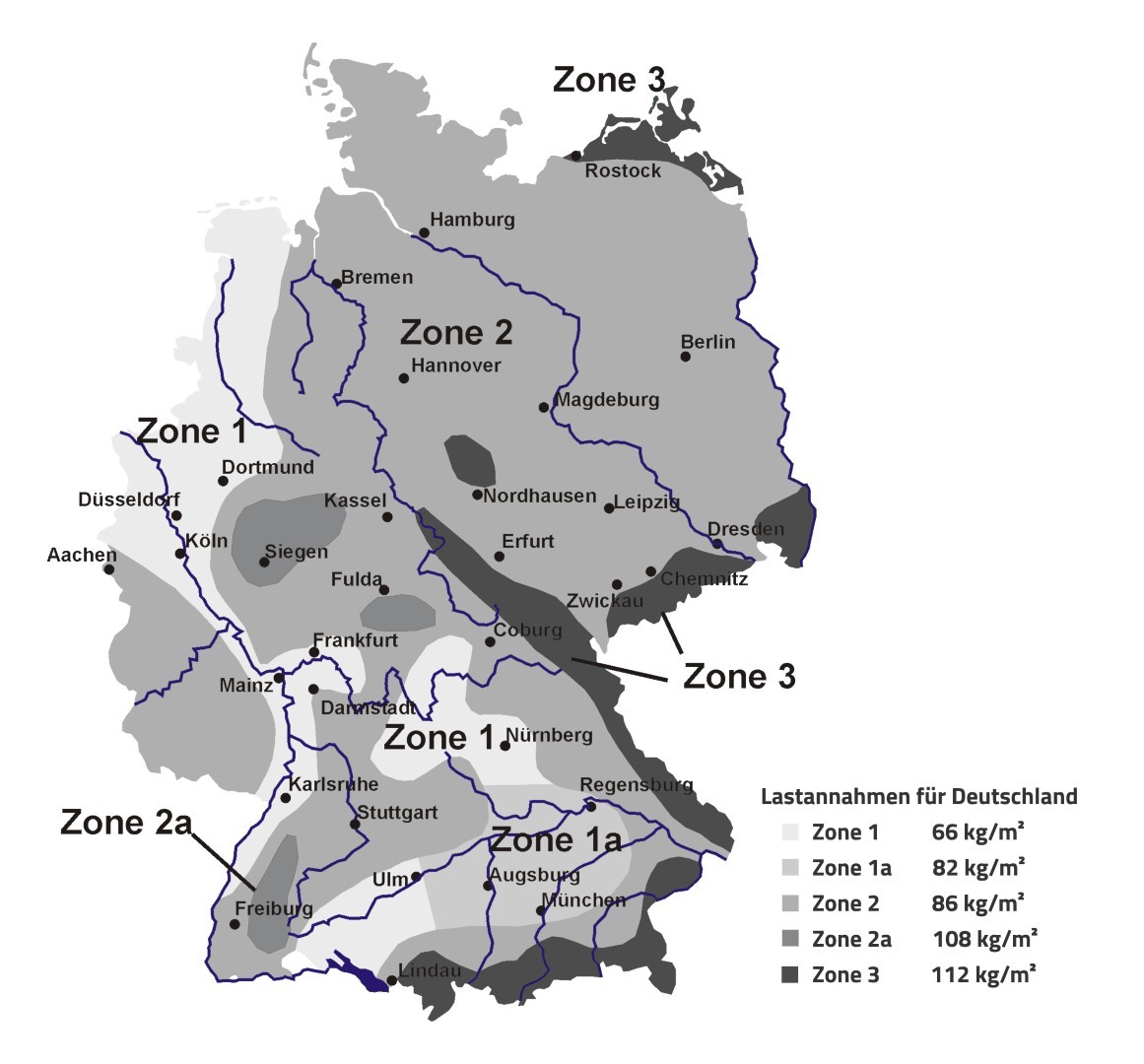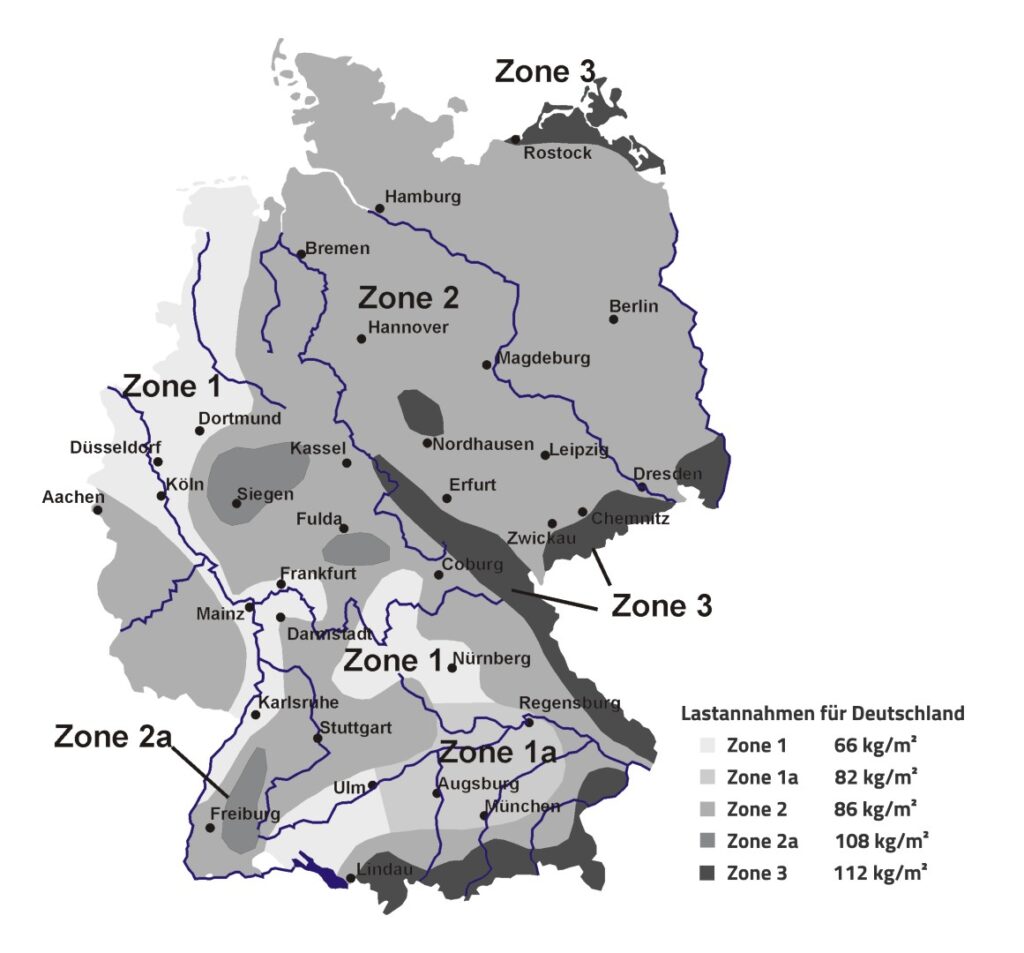Snow load zones in Germany
DGUV recommend
permanent monitoring
Continuous monitoring made
easy: snowcontrol
Crucial for forecasting snow loads is the building's location. Therefore, Germany is sectioned in various snow load zones, representing the snow intensities for every specific region. Still, many premises of older building fabric do not comply with the latest requirements. Flat roofs in particular are potentially at risk due to exceeding snow loads.
The Deutsche Gesetzliche Unfallversicherung DGUV too, emphasize in their information paper DGUV information 212-002 "snow removal on roof areas", that only a multitude of measurement points guarantees for realistic figures of snow load conditions on a flat roof.
By applying our snowcontrol snow load measuring system, roof loads can be monitored conveniently from the office desk or via cell phone.
For more info on snow load and it's measurement, take a look at our FAQ, also.
Snow load zones in Germany
Crucial for forecasting snow loads is the building's location. Therefore, Germany is sectioned in various snow load zones, representing the snow intensities for every specific region. Still, many premises of older building fabric do not comply with the latest requirements. Flat roofs in particular are potentially at risk due to exceeding snow loads.
DGUV recommend permanent monitoring
The Deutsche Gesetzliche Unfallversicherung DGUV too, emphasize in their information paper DGUV information 212-002 "snow removal on roof areas", that only a multitude of measurement points guarantees for realistic figures of snow load conditions on a flat roof.


